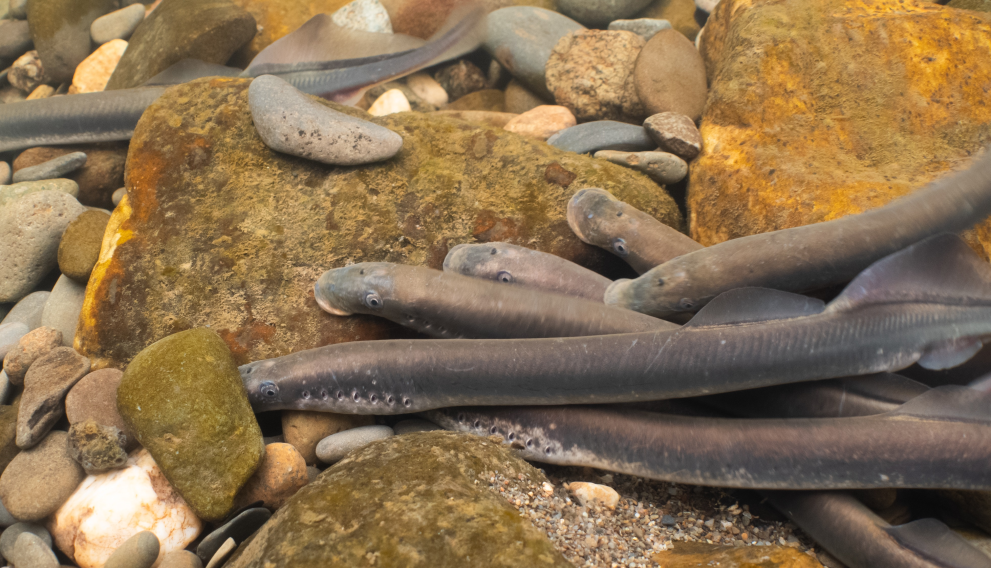
Brook lamprey - which have existed for more than 360 million years and predate the dinosaurs - are notoriously difficult to spot except during spawning, when they move into shallow, clear water in broad daylight to start building their nests.
The video was filmed in the early hours of the morning on the upper Dee and shows brook lamprey moving stones with their jawless sucker mouth to create a nest in the riverbed and begin spawning.
‘Lamprey are one of the key species our project is focusing on, so we were delighted to witness them spawning as we carried out fish tagging work in the upper Dee,’ says LIFE Dee River Project Manager Joel Rees-Jones, who captured the footage. ‘Lamprey populations are fighting for survival, and urgent action is needed to reverse their decline.’
Led by Natural Resources Wales (NRW), LIFE Dee River aims to restore the River Dee, the largest river in North Wales, the UK, which also flows through parts of England. The river covers a catchment area of more than 1,800 km2 and is part of the Afon Dyfrdwy a Llyn Tegid/River Dee and Bala Lake Natura 2000 site, a designated Special Area of Conservation (SAC).
‘Our project aims to restore the river to a more natural state,’ explains Megan McNutt, the project’s Communications Officer. ‘We’re removing physical barriers which prevent fish migrating downstream to the sea and upstream to their spawning grounds and reinvigorate the ecosystems they all depend upon.’
LIFE Dee River aims to protect the river for future generations and the surrounding communities, while creating a rich and healthy ecosystem that will thrive for many years to come. But restoring biodiversity such as the endangered freshwater pearl mussel isn’t easy when the river has multiple uses including farming, water supply, tourism and recreation. That’s why the project places great importance on engaging with local communities.
‘We’re working with land managers and farmers to revive these vital habitats,' explains McNutt. ‘We’ve already created 36 km of fenced riverside corridors, planted over 15,000 trees, reintroduced 5,500 tonnes of boulders and gravel into the river, and we’re visiting farms to offer pollution prevention solutions and advice across the entire Dee catchment.’
Details
- Publication date
- 19 July 2023
- Author
- European Climate, Infrastructure and Environment Executive Agency

